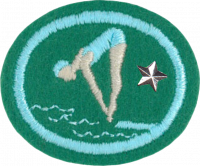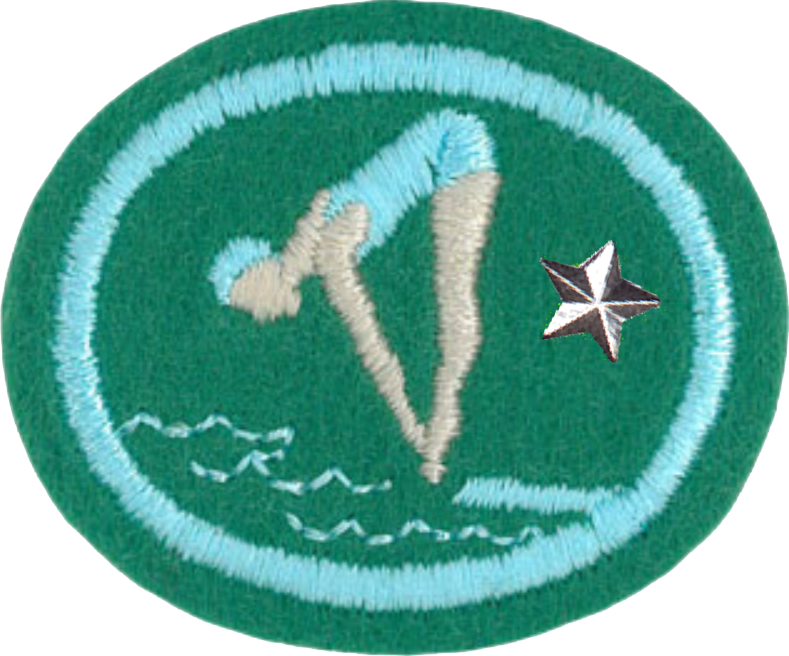AY Honors/Swimming - Advanced/Answer Key
From Pathfinder Wiki
< AY Honors | Swimming - AdvancedAY Honors/Swimming - Advanced/Answer Key/en
The printable version is no longer supported and may have rendering errors. Please update your browser bookmarks and please use the default browser print function instead.
1
Swim a coordinated and effective stroke continuously for the following strokes and distances:
1a
Elementary backstroke for 50 yards (45.7 meters)
1b
Breastroke for 100 yards (91.4 meters)
1c
Inverted breaststroke for 50 yards (45.7 meters)
1d
Sidestroke for 100 yards 91.4 meters)
1e
Overarm sidestroke for 100 yards (91.4 meters)
1f
Tudgen stroke for 50 yards (45.7 meters)
1g
Back crawl for 100 yards (91.4 meters)
1h
Crawl for 100 yards (91.4 meters)
2
Do the following dives in good form:
2a
Standing front dive
2b
Running front dive
2c
Pike surface dive
2d
Tuck surface dive
3
Do a survival float for ten minutes while fully clothed .
4
Do a survival stroke for ten minutes while fully clothed.
5
Do a surface dive and swim underwater for ten yards.
6
Swim continuously for 30 minutes using one or more styles of swimming. Hanging onto the sides (resting) or touching the bottom with the feet is not permitted.
7
Know the causes and prevention of accidents that can occur in or near the water.
Failure to pay attention and horseplay are the main causes of accidents around water. Consuming alcohol and drugs (which no Pathfinder would do) causes most of the rest of the accidents. See the Basic Water Safety Honor for more details.
- Learn to swim before you go into the water. Sounds silly, but many people think it will come naturally, and it really doesn’t.
- Swim near a lifeguard so help is available if you need it.
- Never swim alone.
- Supervise children closely, even when lifeguards are present
- Don't rely on flotation devices, such as rafts, you may lose them in the water.
- Alcohol and swimming don't mix.
- Protect your head, neck, and spine by never jumping or diving into unfamiliar waters.
- As soon as you believe that you may be in trouble, call or wave for help.
- Follow regulations and lifeguard directions.
- Swim parallel to shore if you wish to swim long distances.


